#New England Regional Museum of Art
Text
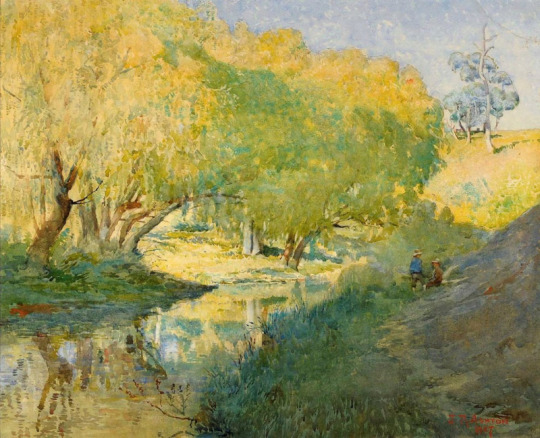
Golden Willows, Julian Ashton, ca. 1907
#art#art history#Julian Ashton#landscape#landscape painting#landscape art#plein air#Impressionism#Impressionist art#Australian Impressionism#Heidelberg School#Australia#Australian art#20th century art#watercolor#New England Regional Museum of Art
92 notes
·
View notes
Text

Shellwork Basket of Flowers
c.1840s
Probably New England Region, United States
Museum of Fine Arts, Boston (Accession Number: 2010.598.1-3)
#shellwork#art#fashion history#decorative arts#1840s#victorian#united states#19th century#mfa boston
525 notes
·
View notes
Text

Nora Heysen (Australian, 1911-2003) • Self-portrait • 1932 • Art Gallery of New South Wales
Artist of the Week
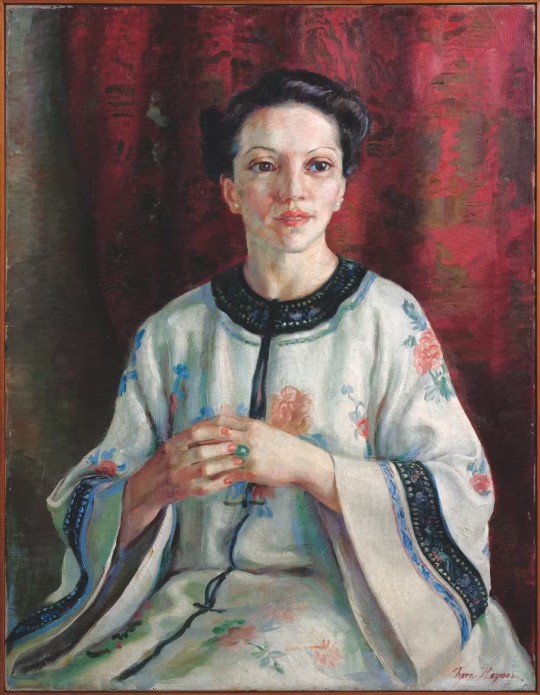
Madame Elink Schuurman • 1938

London Breakfast • 1935 • National Gallery of Australia

Eggs • 1927 • New England Regional Art Museum, Armidale, Australia
#art#painting#fine art#art history#portraitist#portraits#australian painter#woman artist#20th century art#still life#nora heysen
7 notes
·
View notes
Text
2022 Reading Log, pt 12
School’s out, so I should have more time to read!

56. A Salad Only the Devil Would Eat by Charles Hood. A collection of essays about the author’s experiences and views on the natural world. The title comes from a description of the plants found in his hometown, on the edges of the Mojave Desert. Other topics include why he gave up birding, his love/hate relationship with taxidermy in natural history museums, whale watching and how much he loves palm trees. Pleasant enough, but easily forgotten. So much so that I didn’t remember that I had read this until I was going through my library piles!

57. The Golden Rhinoceros by François-Xavier Fauvelle, translated by Troy Tice. This is a collection of short essays about the history of Africa during what, in Europe, would be the Middle Ages. The introduction discusses how this has simultaneously been called a Dark Age, because we have very little records from it, and a Golden Age, because it seems like people were doing alright for themselves. Most of the essays are about the writings of Muslim traders, who were writing with agendas in mind, or the archaeological record, which is often spotty and difficult to coordinate with the written record from foreigners. The book ends with discussing the coming of Western Europeans to Africa, and how they were more muscling out traders from the Muslim world more than creating entirely new networks. This is especially apparent in a great historical irony that I didn’t know about until reading this book. During Vasco de Gama’s expedition around the Cape of Good Hope and into the Indian Ocean, the East Africans didn’t think much of their appearance, because they thought that they were from India!

58. Anthropology and Cryptozoology: Exploring encounters with mysterious creatures, edited by Samantha Hurn. This is a collection of academic essays from an anthropological perspective about mystery animals, monsters and gods. It will probably piss some people off how broadly the terms “cryptozoology” and “cryptid” are applied here, both from the cryptozoology end and the folklore end of the spectrum. There’s multiple entries about snakes appearing in dreams and hallucinations that are referred to as “cryptids”, for example! Some of the other topics include an ethnozoology of cat classification in Zanzibar and Flores, the growing concern about wolf people in post-communist Mongolia, and a discussion of the ganka, an animal that only exists as a prank played on New Jersey shark fishermen (a hyper-regional version of the snipe, basically). Interesting, but definitely not a traditional “cryptozoology” book by any means.
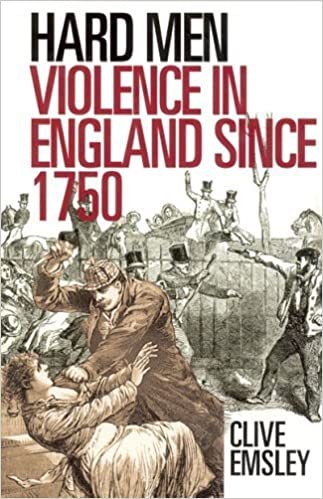
59. Hard Men: Violence in England Since 1750 by Clive Emsley. This book is coming off of a citation in Violent Victorians, which has a similar thesis: England prides itself on being less violent than its Continental European neighbors and American descendents, but this is only because they willingly discount a lot of things as being “violent”. Crime statistics are one thing, but contact sports, police brutality and capital punishment were all seen as properly English at one point or another (or still). There are entire chapters on domestic abuse, labor unrest and people being acquitted for crimes against foreigners, so it’s not exactly a light, cheery read. I’m surprised that it didn’t include a discussion of England’s colonial enterprises—violence done by the state surely includes the various brutalities against occupied people.

60. Book of Beasts: The Bestiary in the Medieval World edited by Elizabeth Morrison. This is the book of a museum exhibit—a collection of bestiaries and art with bestiary inspired iconography displayed at the J. Paul Getty Museum. I’ve read a number of books about medieval bestiaries, but this is the first to treat them as art objects primarily, instead of being more interested in the texts and the symbolism. Essays in the book talk about the origins of bestiaries, the design links between different surviving texts, a few bestiaries where the artists screwed up, translations into the vernacular and books written post-bestiary (like the Bestiary of Love, wherein the Christian symbolism is stripped out and replaced with allegories about love, lust and sex). Some of the essays seem a little short, like they get cut off right as they’re reaching the point. But the book is lovely and has excellent reproductions, which is its primary goal.
#reading log#bestiary#sociology#victorian#nature writing#cryptozoology#anthropology#history#african history
36 notes
·
View notes
Text
B.B.P. Hosmillo is a practice-led researcher at The University of New England, Australia. Author of Breed Me: a sentence without a subject / Phối giống tôi: một câu không chủ đề (AJAR Press, 2016) with Vietnamese translation by Hanoi-based poets Nhã Thuyên and Hải Yến, their writings have also been translated into Indonesian, Bulgarian, and Korean. Founder and co-editor of Queer Southeast Asia: a literary journal of transgressive art, their poetry has appeared in The Ilanot Review, Palaver, Prairie Schooner, and Tupelo Quarterly as well as in anthologies Bettering American Poetry 2015, The Bookends Review Best of 2018 Anthology, and Quarterly Literary Review Singapore Anthology. B.B.P. Hosmillo has received fellowships from The Japan Foundation in Tokyo, Asia Research Institute of the National University of Singapore, and the Ministry of Foreign Affairs of the Republic of Indonesia. They have served as a guest poetry editor for Cha: An Asian Literary Journal and Anomaly. In 2019, they were awarded Honorary Mayor by the city government of Jeonju, South Korea. In August 2023, they are participating in Winter Blooming, a festival that celebrates First Nations, multicultural, LGBTQA+ arts, culture, communities, and allies; co-curated by Dr. Christina Kenny of The University of New England and Rachael Parsons of the New England Regional Art Museum in New South Wales, Australia.
#enumerate#poetry#poem#lgbtq#queer#literature#asia#southeast asia#australia#b.b.p. hosmillo#the offing
2 notes
·
View notes
Text
youtube
What does SH know about ‘Hope’?
Not too much... In SH's interview at 92NY, he talked about working as a waiter and opening a bottle of champagne at an event at the Victoria & Albert Museum almost hitting the whale skeleton that hangs from the ceiling in the great room.
There is a drawback. Victoria & Albert Museum is the world's largest museum of applied arts, decorative arts and design and houses a permanent collection. But the V&A museum was never home to the blue whale 'Hope'🐋, a scientific artefact installed at the National Museum of Natural History in London in 2017, three years after Outlander began... In other words, there is no skeleton of a blue whale at the V&A museum. SH’s stories are more fictitious than true accounts of his life.

Victoria & Albert Museum
‘Hope’ the blue whale skeleton is the centrepiece suspended from the ceiling at the Natural History Museum in London, it took the place of Dippy the Diplodocus in 2017.

Dippy then left the Museum in 2017 to complete a whirlwind tour of the UK.
Dippy was commissioned for the Museum in 1905 by American businessman Andrew Carnegie, who that year bought the bones of the first Diplodocus ever discovered for his museum in Pittsburgh. Dippy had been on display in Hintze Hall since 1979, before being taken down in January 2017 for his tour.
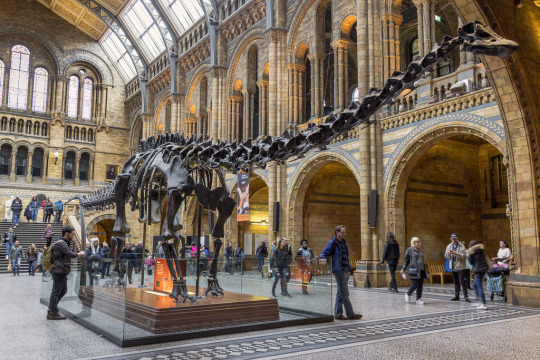
A BIG ARRIVAL
The skeleton now on display in Hintze Hall is from a whale that became stranded in 1891 in Wexford Harbour, Ireland, 10 years after the Museum opened in South Kensington. It was bought by the Museum and first went on display in the Mammal Hall in 1934, where it was suspended above a life-size model of a blue whale. Curators, conservation teams and engineers worked on the blue whale skeleton for months - mostly in an off-site warehouse due to its enormous size - cleaning and preparing it for its new home in Hintze Hall.

The entrance hall, at the Natural History Museum, a favourite of childhood, Dippy, was easily replaced by a blue whale skeleton that hung from the ceiling on 14th July 2017. It is an actual skeleton taken from a young female blue whale that washed up in Ireland in 1891. Although some whales live to 100 years old, Hope may have been only 15 years old when she died. Despite her youth, she stands at an incredible 25.2 m and her bones alone weigh 4.5 tons.
NEW STAR
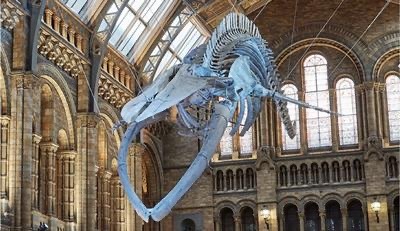
Hope takes centre stage in Hintze Hall in place of Dippy, the Diplodocus dinosaur skeleton cast that is soon to embark on a two-year tour of the UK, visiting Scotland, Northern Ireland, Wales and five regions across England. The tour aims to connect the nation with nature and spark the imagination of a new generation of scientists, naturalists and environmentalists.
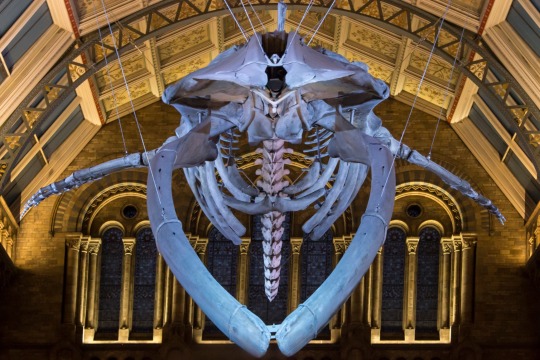
4 notes
·
View notes
Text
These Facial Reconstructions Reveal 40,000 Years of English Ancestry
As the U.K. wrestles with issues of identity and nationalism around Brexit, a new exhibit is putting fresh faces on the region's ancient residents.
— By Kristin Romey

The Stafford Road Man, left, and the Patcham Woman, right, are among the facial reconstructions of ancient “locals” who lived on the coast of southern England over the past 40,000 years.
In 2018, the dark-skinned, blue-eyed facial reconstruction of Cheddar Man, a 10,000-year-old British resident, made international headlines and sparked discussions about “native” identity in a nation grappling with Brexit and issues of migration.
A year later, an exhibit at the Brighton Museum & Art Gallery revealed the faces of seven more ancient “locals” who lived on the coast of southern England over the past 40,000 years, showing how science confirms that the history of the region is much more complicated than we once thought.
Five of the seven individuals are true “locals,” forensically reconstructed from skulls excavated around Brighton in the southeastern county of Sussex. The most modern “local,” a 40-something man excavated during building construction in the 1980s, dates to the Anglo-Saxon period, a time when England was first unified under one king, explains Richard Le Saux, the museum’s senior keeper of collections.
The most ancient natives are a Neanderthal woman and an early modern man. Their facial reconstructions are based on remains from elsewhere in Europe, but artifacts found in the Brighton area show that both were local residents some 40,000 years ago.
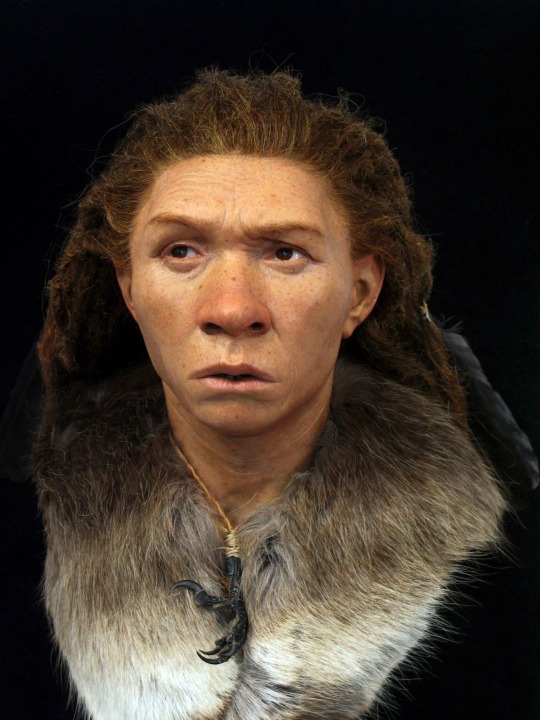
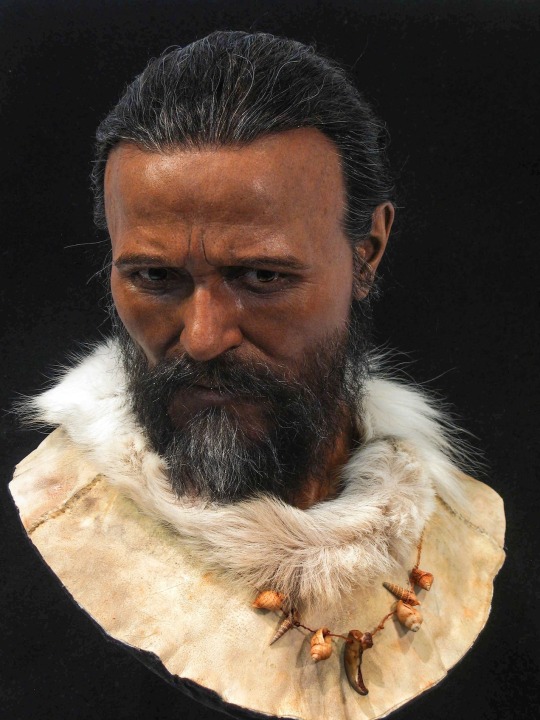
Left: Neanderthal Woman! While this Neanderthal woman’s remains come from elsewhere in Europe, movement between what is now continental Europe and the British Islands was easier during the last Ice Age, and artifacts from southern England show that both Neanderthals and modern humans were residents of Brighton some 40,000 years ago. Coutesy Royal Pavilion & Museums, Brighton & Hove
Right: Early Modern Man! The skeletal remains for this early modern man also came from elsewhere in Europe, but tools manufactured by Homo sapiens show that modern humans were living in Brighton just as the Neanderthals were going extinct. Studies suggest that Neanderthals and modern humans may have overlapped in Europe for as much as 4,000 years. Coutesy Royal Pavilion & Museums, Brighton & Hove
Back to Life
The bygone Britons were brought back to life over the course of 14 months by Oscar Nilsson, an archaeologist and sculptor who has reimagined the faces of other individuals in history, including a 1,200-year-old Peruvian noblewoman and a 9,000-year-old teenager from Greece. Nilsson’s forensic technique starts with an exact 3D replica of the original skull, scanned, printed, and then modeled by hand to reflect bone structure and tissue thickness based on the individual’s origin, sex, and estimated age at death.
Recent genome studies of ancient European populations enable Nilsson to outfit his reconstructions with reasonably accurate estimates of skin, hair, and eye color. The Neolithic population that the 5,600-year-old Whitehawk woman belonged to, for instance, generally had lighter skin and darker eyes than earlier occupants of Britain such as Cheddar Man, but were darker than the exhibit’s Ditchling Road man, who arrived on the island in the first wave of light-skinned, light-eyed Beaker people from continental Europe around 4,400 years ago.


Left: Patcham Woman! Patcham Woman was a resident of Roman Britain, and her burial may be a 1,700-year-old crime scene: She was discovered by ditch diggers in 1936, buried in a fairly deep pit with a nail driven deep into the back of her skull. More nails were scattered by her knees, and a male skeleton was found lying feet-to-feet with her. Signs of stress and disease in her spine and joints show she led a hard physical life before dying sometime between the ages of 25 and 35. Coutesy Royal Pavilion & Museums, Brighton & Hove
Right: Stafford Road Man! Discovered in 1985 during building works, Stafford Road Man is among the first wave of Saxons to enter Britain after the collapse of the Roman Empire. Buried with a spear and a knife around 500 A.D., he lived an unusually long and active life and died after the age of 45. Apart from arthritis in his spine, shoulders, and hips, skeletal analysis shows Stafford Road Man suffered from an enormous dental abscess, which would have caused terrible pain and likely killed him after the infection spread to his brain. Coutesy Royal Pavilion & Museums, Brighton & Hove
The faces of ancient Brighton residents likely sparked Brexit-related conversations about the regions previous occupants and cultural connections to continental Europe, says Le Saux.
“One of the stories that we're going with is how often we've been linked to Europe, and how much of our history is informed by series of mass migrations in each period,” he explains, adding that Britain has been physically part of mainland Europe several times over history, the last time just 8,000 years ago.


Left: Ditchling Road Man! Ditchling Road Man, named for the road-widening project that revealed his remains in 1921, was part of the first wave of farmers from continental Europe that arrived in Britain with their distinctive Beaker pottery around 2,400 B.C. His remains show that he suffered several periods of malnutrition while growing up, which may have slightly stunted his growth. Ditchling Road Man died between the ages of 25 and 35 and was buried with a Beaker vessel by his feet and a small number of snail shells next to his mouth. Coutesy Royal Pavilion & Museums, Brighton & Hove
Right: Slonk Hill Man! Slonk Hill Man died about 2,300 years ago, but his cause of death remains a mystery. Excavated in 1968 during a highway project, he was an active, strong, and healthy man in his later twenties when he passed away and was buried in a semi-crouched position in the bottom of a storage pit, a practice typical during the Iron Age. What makes the burial unusual, however, is that he was laid atop a thick pile of uncooked and uneaten mollusks—especially considering that seafood would not have been a common part of Slonk Hill Man’s diet. Coutesy Royal Pavilion & Museums, Brighton & Hove
Individual Lives
What makes the ancient Britons portrayed in the exhibit so interesting, Nilsson says, is how science reveals the lives they’ve lived. “I’ve worked with so many skulls, but these were the most characteristic ones I’ve seen. The faces that developed became so individual.”
Whitehawk Woman stands out for the apparently unusual circumstances of her life and death: Scientific studies show that she was born more than 5,000 years ago on the Welsh border, then moved several hundred miles [east] to Sussex at some point, and was buried with good luck charms in a grave at the entrance to a Neolithic ceremonial site.
The remains of a fetus found in her pelvic area suggest she likely died in childbirth, a scientific insight that informed Nilsson’s artistic depiction.
“I wanted her to look a bit curious—thinking about the future—because I'm thinking of the moment when you see her is perhaps before she's giving birth to the child that probably led to her death,” says Nilsson.
The swaggering 2,300-year-old Slonk Hill Man posed his own particular problems, Nilsson adds. According to his bone structure, the Iron Age twenty-something was “probably kind of good-looking,” which can sometimes lead to a reconstruction that looks too much like a mannequin, the sculptor explains. The skull also featured a pronounced point where the brow ridges joined, which could have given Slonk Hill Man a bit of a “cruel” expression. “It was difficult to make him smile without looking too creepy,” Nilsson says.

Whitehawk Woman! Small and slender, Whitehawk Woman lived about 5,600 years ago and died before the age of 25, possibly during childbirth (the remains of a fetus were found in her pelvic area). She was excavated in 1933 from a burial in the Whitehawk Enclosure, one of Britain’s earliest Neolithic monuments. Recent DNA analysis from the Neolithic Whitehawk population suggests they were generally dark eyed and dark skinned in comparison to the Beaker population that eventually replaced them around 4,400 years ago. Coutesy Royal Pavilion & Museums, Brighton & Hove
Then there was the artistic decision that had to be made with Stafford Road Man, a Saxon-era adult who likely died from a terrible facial abscess. The infection was probably grotesquely swollen at the time of his death, but Nilsson chose not to exaggerate the ailment. “I wanted to show him with some kind of dignity, and establish a connection between him and the visitor to the museum.”
2 notes
·
View notes
Text
Newcastle Art Lights Up Downing Street

Celebrating Northeastern Talent in the Heart of Government
In a vibrant celebration of art and culture, Downing Street's famous corridor is now adorned with a collection of nine exquisite artworks from the Laing Art Gallery in Newcastle. These pieces, representing the rich cultural heritage of Newcastle and the wider North East of England, will grace the halls of Number 10, capturing the attention of world leaders, industry bosses, and high-profile guests for the next twelve months.
A Museum in Residence at Number 10
Showcasing Northeastern Art to the World
The display is part of the Government Art Collection’s ‘Number 10 Museum in Residence’ project, a yearly collaboration with a UK museum or gallery. This initiative has seen partnerships with renowned institutions such as the Glynn Vivian in Swansea and The Whitworth Art Gallery in Manchester. The Laing Art Gallery, nestled in the heart of Newcastle, offers a unique perspective on the city and its surrounding region through these carefully chosen artworks.
Artworks That Tell a Story
Capturing the Essence of Northeastern England
The selection includes paintings that vividly depict Newcastle’s cityscape and others reflecting the diverse art scene of the North East. These works, by influential artists linked to the area, showcase the city’s landmarks and landscapes. Highlights include Edward Dickey’s painting of the Tyne Bridge mid-construction and Byron Dawson’s portrayal of the famous traveling fair, The Hoppings.
The Artists Behind the Canvas
A Tribute to Local Talent and History
These artworks are not just visual treats but also narratives of the artist's connections to the region. The collection features mid-20th-century works by graduates of King’s College (now Newcastle University) and others inspired by the region's natural beauty and urban dynamism.
Ministerial and Curatorial Voices
Celebrating Northeastern Heritage at Downing Street
Arts and Heritage Minister Lord Parkinson of Whitley Bay conveyed a deep sense of pride in the opportunity to highlight Tyneside's rich cultural and historical tapestry through this unique partnership. His enthusiasm was mirrored by Julie Milne, Chief Curator of Art Galleries at Tyne & Wear Archives & Museums, who also recognized the significance of this collaboration.
Milne emphasized the invaluable chance to introduce these captivating works from the Laing Art Gallery to an international audience, thus extending their reach and impact far beyond their usual gallery confines and into the global sphere.
A Diverse Array of Artworks
Full List of Featured Pieces
The artworks include Norman Cornish's 'Pit Road', capturing a miner's return home, and Louis Grimshaw's 'St Nicholas Street', depicting vibrant Newcastle shops. Arthur Grimshaw's 'The Quayside' and Victor Pasmore's 'Girl with Mirror' are also part of the exhibit, along with other notable pieces.
The Significance of the Exhibition
Beyond Aesthetic Appeal
This exhibition is more than a display of artistic talent; it’s a testament to the Government Art Collection's commitment to promoting British art and culture. For the Laing Art Gallery, this opportunity allows the gallery to share its treasures with a broader audience, enhancing Newcastle’s presence on the national stage.
The Artworks’ Journey to Downing Street
Careful Selection for a Prestigious Display
This thoughtful curation process, prioritizing artworks not currently active in the lending gallery's program, opens the door for these pieces to captivate and inspire new audiences within the esteemed corridors of Downing Street. This innovative initiative transforms the traditional gallery setting of the Laing Art Gallery, propelling these artworks onto a national and international stage.
It's a unique opportunity for art to gain wider recognition, allowing a broader audience to appreciate the cultural richness and artistic talent that the North East of England has to offer.
A Broader Perspective
The Government Art Collection and the Laing Art Gallery
In its role as a vital instrument for cultural diplomacy since 1899, the Government Art Collection has been instrumental in showcasing British art globally, within government buildings, and beyond. This effort serves not only as a display of artistic prowess but also as a bridge between cultures and nations.
Similarly, the Laing Art Gallery, under the stewardship of Tyne & Wear Archives & Museums, stands out as a beacon of artistic excellence. It proudly holds an internationally recognized collection, hosting an array of historic and contemporary art exhibitions that reflect the rich tapestry of British art and culture.
Wrapping Up
A Cultural Bridge Between Newcastle and Downing Street
This exhibition not only beautifies a historical corridor but also bridges the gap between the bustling artistic scene of Newcastle and the political epicenter of the UK. It’s a celebration of regional talent and a reminder of the unifying power of art in diverse settings.
Sources: THX News, Department for Culture, Media and Sport & Lord Parkinson of Whitley Bay.
Read the full article
#CulturalDiplomacythroughArt#DowningStreetArtDisplays#GovernmentArtCollectionInitiative#HistoricNewcastleLandscapes#LaingArtGalleryExhibition#MuseuminResidenceProject#NewcastleArtworksinDowningStreet#NortheasternEngland’sArtisticHeritage#ProminentNortheasternArtists#TyneBridgeinArt.
0 notes
Text
Exploring the Better of England: A Memorable Journey
When it comes to exciting and diverse places to visit, England is the best. From iconic landmarks that will take the visitor back to a bygone era, to lively cities that are buzzing with modernity, this enchanting country offers an abundance of adventures to meet the needs of all travelers. It doesn't matter whether you're a lover of history, a nature enthusiast, or a culinary connoisseur, England has something remarkable to offer. In this article, we'll take you on a journey through six must-experiences in order to make the most out of your trip to England.
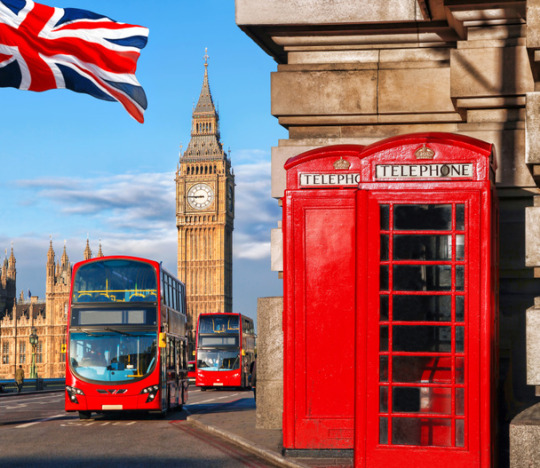
Your journey across England generally begins in the lively capital city, London. In London, you'll be welcomed by an array of historic sights and contemporary tourist attractions. Walk along the River Thames and gaze at the iconic Big Ben and the majestic Houses of Parliament. Explore the historic Tower of London, home to the Crown Jewels, and don't be averse to watching the ceremonial changing of the guard at Buckingham Palace. For those who love art, the British Museum and Tate Modern are world class collections. Of course, a visit to London wouldn't be not complete without experiencing the West End's stunning theatre productions as well as sampling British cuisine at a traditional pub.
As you move beyond London beyond the city, the English countryside opens up in beautiful fields, hills, and charming villages. The Cotswolds are a charming area, complete with houses thatched in the sun and the winding lanes make up the perfect rural paradise. It is a peaceful retreat, with the possibility of leisurely walks, restaurant lunches and a time to enjoy the tranquility and simplicity of rural living. The Lake District in the northwest is a paradise for those who love nature and are keen on adventure. Here, the rugged beauty of the lakes as well as mountains beckons you to go hiking, cycling, or just enjoying a waterside lunch.
For outdoor enthusiasts and nature lovers, England's Lake District is a paradise on Earth. This beautiful region is home to beautiful lakes as well as lush green valleys and towering mountain ranges. Discover the picturesque towns that are Keswick and Ambleside while taking stunning hikes that take you around Lake Windermere and Ullswater. If you're feeling adventurous try climbing Scafell Pike, England's highest mountain. It's a must. Lake District is not only the perfect place for hikers to go, it's as a place of inspiration for artists and writers, for instance, William Wordsworth. To find new details please head to https://what-to-do-in.co.uk/

Enjoy the beautiful scenery of the Cotswolds which is a region that's famous for its stone towns with honey-colored stones, rolling hills, and picturesque charm. Explore towns like Bourton-on-the-Water, Bibury, and Castle Combe, where quaint cottages and meandering streams create postcard-perfect scenes. Outdoor lovers can take picturesque walks on the Cotswold Way, while historians can take a tour of historic manor houses and gardens.
For foodies, a trip to England will not be complete without savoring the delectable delights from Cornwall. Famous for its seafood freshness and creative cuisine, Cornwall offers a unique gastronomic experience. Eat the traditional Cornish desserts by the sea, savor cream teas in charming tearooms, or try local ale and cider in warm pubs. Check out Rick Stein's seafood restaurant in Padstow and embark on an adventure to find some hidden treasures serving the finest of Cornish culinary delights. With breathtaking coastal views to admire as a backdrop, Cornwall is a wonderful culinary journey.
1 note
·
View note
Text
Secrets of England: Unveiling Hidden Treasures beyond the Crowds
There are untold astounding places to explore in England, including enormous national parks, stunning beaches, cultural cities, & majestic castles. Residents of England are constantly on the lookout for novel places to see as staycations grow in fame. We would want to show you a new England. Here is our analysis of the off-the beaten England sightseeing places.
Off-the-Beat Attractions in England
Here are some must-see England tourist attractions that are off-the-beaten.
The Jurassic Coast
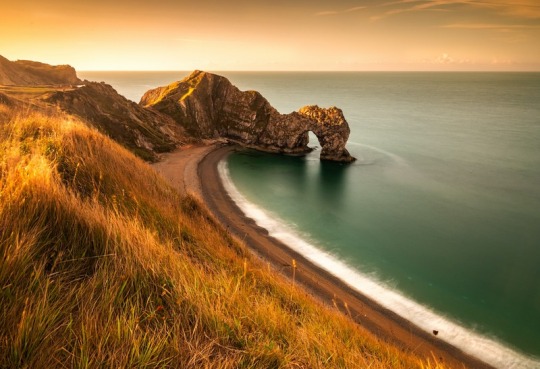
This is a UNESCO World Heritage Site that is home to spectacular coastal scenery, fossils, and unusual geological formations. It is situated on the southern coast of England.
Lundy Island
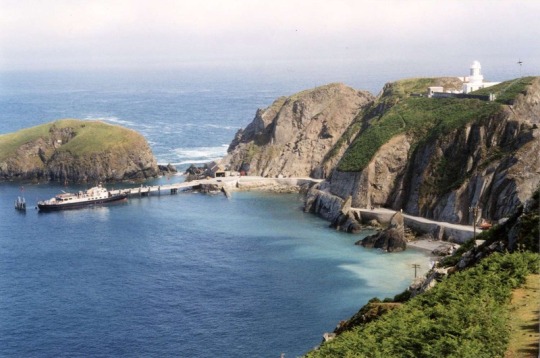
Image credit- johngrimes.co.uk
A shelter for wildlife, such as puffins and seals, Lundy Island is located in the Bristol Channel. It is a tranquil getaway that is far away.
Avebury
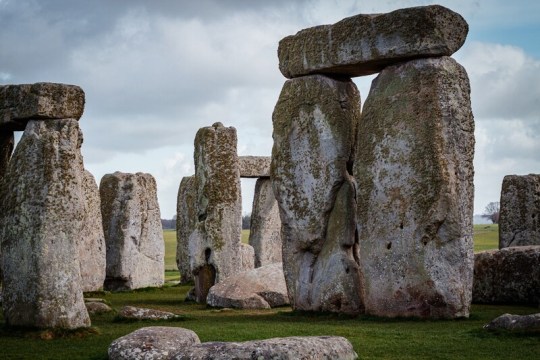
Frequently overshadowed via Stonehenge, Avebury has a larger and no less enigmatic stone circle. Even walking amid the stones is possible.
The Lost Gardens of Heligan
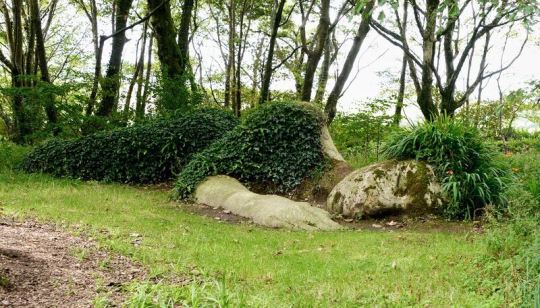
These gardens, which are in Cornwall, were long forgotten about before being found and brought back to their former splendor.
Stourhead

With its traditional temples, bridges, and grottoes, this Wiltshire manicured park from the 18th century is a beautiful site to explore.
Durham Cathedral
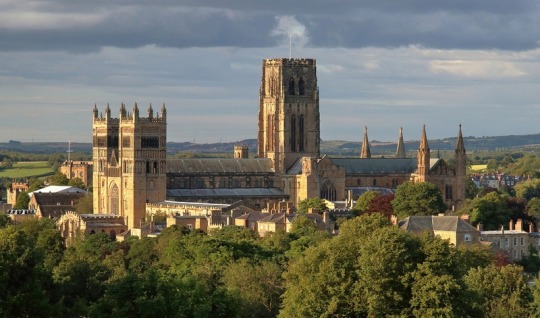
The UNESCO World Heritage Site Durham Cathedral and the ancient Durham Castle are located in this northeastern English city.
The Norman Gate
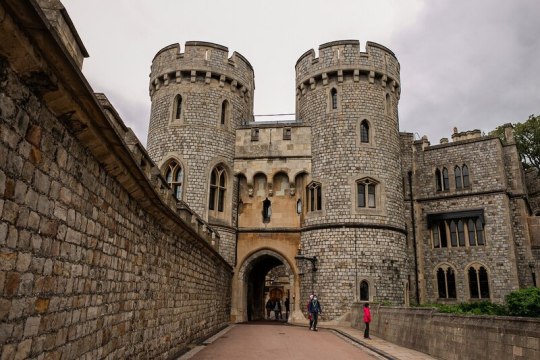
Many people frequently overlook the Norman Gate, in Windsor Castle which is located at Lower Ward entrance. It is an amazing piece of architecture & was built into the castle's original medieval framework.
Rievaulx Abbey

This Cistercian abbey is a gorgeous and tranquil location tucked away in North York Moors.
The Seven Sisters
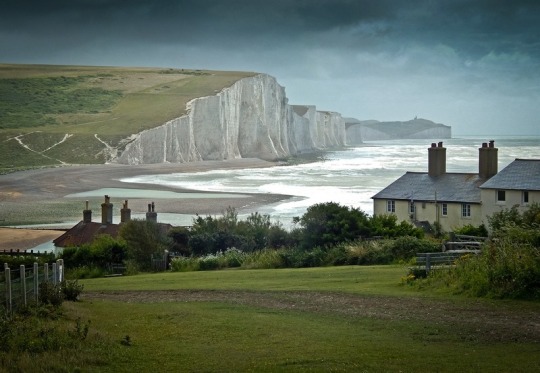
Such impressive white chalk cliffs in Sussex offer wonderful hiking opportunities and expansive vistas of the English Channel.
The Cotswolds
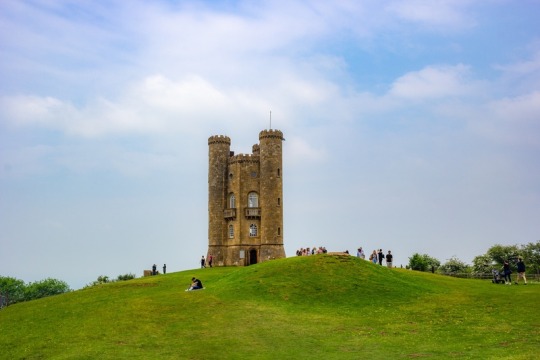
Although not completely off the beaten track, smaller towns like Bibury & Castle Combe provide a more tranquil and conventional English rural experience.
Museum of Bath

Housed in a historic structure, this museum provides an overview of Bath's architectural heritage and is frequently less crowded than the city's top tourist destinations. There are several interesting things to do near bath for instance Oxford.
Aysgarth Falls Yorkshire
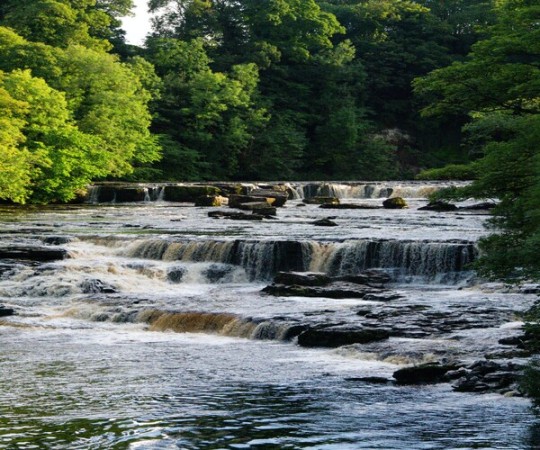
This group of waterfalls in Yorkshire Dales is a tranquil and lovely place to hike.
Dungeness
A shingle beach, vintage fishing boats, & an abandoned nuclear power plant are some of the peculiar and unsettling elements of this Kent coast location.
The Tamar Valley
With its trees, meadows, and Tamar River, this region on the boundary between Devon & Cornwall is a hidden jewel of natural beauty.
The York Art Gallery is home to a remarkable collection of artworks, including pieces by well-known painters like Lowry & Hockney, despite not being as well-known as some other art institutions in the UK. This is amid the best things to do in York.
Why England’s Off-the-Beat Path Attractions so Popular?
For a variety of interesting sounding reasons, off-the-beaten-path tourism in England has grown in popularity as tourists look for authentic and one-of-a-kind experiences. Here are some strong arguments for why these hidden best places to visit in England so alluring.
Hidden treasures and lesser-known locations in England provide a change from the typical tourist crowds. Exploring these uncharted territories can be an exciting journey. Visitors can fully immerse themselves in the customs, traditions, & way of life of the area by venturing off the beaten path. These less-traveled areas offer genuine encounters that let visitors see England as it really is, unfiltered by tourism.
Destinations that are off the usual route can have breathtaking natural beauty, from tranquil farmland views to rocky coasts. England is rife with history, and undiscovered places can include historical gems that may not be as well-known or popular.
These isolated spots give a respite from the bustle of more popular tourist destinations and offer a sense of peace & tranquility that is difficult to obtain elsewhere. A sense of excitement and discovery are sparked by exploring off-the-beaten-path locations, making the journey itself an unforgettable aspect of the vacation experience.
Wrapping Up
As you find areas that not everyone gets the chance to view, discovering secret famous places in England and following the path less taken can give you a sense of success.
1 note
·
View note
Text
How much do you know about paper sculpture?
Engraved paper carvings originated from traditional paper carvings. The earliest paper carvings in China were made by hand. In the middle of the 18th century, paper sculpture was brought a new life by a group of European artists who loved to create. This was a heyday of new forms of paper sculpture. After that, the genre of paper sculpture began to be clear. Currently, there are three mainstream schools: Cubism, Experimentation and engraving on paper.
Paper carving, also called paper relief. Its origin can be traced back to the invention of paper in the Han Dynasty in China and the improvement of paper in Germany in the 16th century. Paper carving is a craft that uses paper as a material and uses knives to shape it. Paper as a representation of three-dimensional forms appeared very early, and there were figures made by hand in China very early. In the middle of the 18th century, a group of European artists who loved to create opened the door to the art of paper sculpture. They used simple tools and different papers to create many themed paper sculptures. In the 17th century, the famous British pioneer of paper sculpture Augustine. Walker, two marine works completed in 1760 are still preserved in the National Maritime Museum in Greenwich, England.
In the final analysis, paper carving is a handicraft made of a special paper. According to reports, paper sculptures were first made of papyrus made of a plant called "papyrus". Later, in Turkey and other Gulf regions, people began to replace this papyrus with the skins of livestock, but this also made this papyrus virtually invisible. Handicrafts are expensive. In the 20th century, people made similar paper substitutes, and this kind of paper is both strong and soft, and the price is relatively cheap, so this kind of thick and transparent paper relief material was born.
As paper sources became more widespread and paper carving techniques evolved, paper carving developed into a lucrative illustration medium. So far, paper sculpture is still the vanguard of the three-dimensional illustration industry. Many art schools in the West have special departments to teach paper sculpture and various three-dimensional creation methods derived from it.
As for another school of paper carving, engraved paper carving is a craft created with paper as the material and knife as the auxiliary tool. It adopts advanced new flexible paper, engraves on the paper with a sharp scalpel, and finally takes shape. In the development process of engraved paper carving, it gradually absorbed the characteristics of printmaking and fine brushwork painting, and at the same time continued to innovate in content and theme, and finally became a family of its own.
0 notes
Text
The Long Island Museum
Located on Route 25A in Stony Brook and a short distance from the still-running Grist Mill and the historic Three Village Inn, the Long Island Museum offers visitors an immersion into the area’s rural past through three modern exhibition buildings and five authentic structures sprawled across a nine-acre campus.
Accredited by the American Alliance of Museums in 1978 because of its excellence in exhibitions, programs, and collection care, and one of the country’s few Smithsonian affiliates, it displays American history and art with a Long Island connection.
Tracing its origins to the Suffolk Museum, whose original Christine Street building stills stands today, it was established to preserve, exhibit, and interpret artefacts by five founding members at the end of the Great Depression: Ward Melville; his wife, Dorothy Bigelow Melville; Robert Cushman Murphy, a prominent naturalist; Winfred Curtis, a local doctor; and O. C. Lemphert, an insurance broker.
A growing collection, along with the addition of carriages in 1952, soon prompted the search for new headquarters, which took form as the History Museum on one side of Route 25A. New to the then-named “Museums at Stony Brook,” it was old to the area.
The site was once the location of the D. T. Bayles Lumber Mill, whose lineage stretches back to 1874 and which operated until 1955. Melville purchased the building at that time.
“Ward Melville always wanted Stony Brook to be a village similar to the ones found in New England,” according to the Long Island Museum’s website. “The Long Island Museum was inspired by this premise and museum grounds soon resembled a New England village as local historic buildings were carefully tucked onto the grounds… Since 1939, the museum has grown to become a leading institution on Long Island and the only Smithsonian affiliate in the region.”
THE HISTORY MUSEUM
The History Museum, which serves as the Visitor’s Center and gift shop, is the location of changing art exhibitions. Its most recent “Fire and Form: New Directions in Glass,” for instance, encompassed some fifty works by eight contemporary artists, whose variety of approaches, inspirations, and starting points demonstrated the near-infinite nature of sculptural creation.
The separate Cowles Gallery, named after Sharon Cowles, who once lived next to Dorothy and Ward Melville and recently made a significant contribution to the museum, showcases works from its permanent collection.
THE DOROTHY AND WARD MELVILLE CARRIAGE MUSEUM
Cornerstone of the Long Island Museum complex, which is located across Route 25A, the 40,000-square-foot Dorothy and Ward Melville Carriage Museum occupies the site of the former Stony Brook Hotel and depicts the pre-motorized purposetime era by means of more than a hundred horse-drawn vehicles displayed in eight galleries.
Its centerpiece, which is visible as soon as the visitor enters the building, is the “Grace Darling,” a 45-passenger, beautifully decorated omnibus originally pulled by a half-dozen horses. Richly upholstered and spring-provisioned to reduce wheel impacts on unpaved trails, it was employed on excursions to Coastal Maine between the 1880s and the early-20th century.
The “Going Places” Gallery features carriages that were commonly used on Long Island, along with a fiber optic map that illustrates the development of regional transportation routes.
The Wells Fargo Coach, one of its exhibits, is representative of the vehicles used by Wells Fargo and Company, whose transportation services were vital to the country’s westward expansion. Inaugurating overland passenger service in April of 1887, it assessed the then-astronomical fare of $275.00 for the Sacramento, California, to Omaha, Nebraska, route.
The “Carriage Exhibition” Gallery, based upon the 1893 World’s Fair transportation building, highlights the opulence wealth could inject into a carriage.
0 notes
Text
Multiple species of semi-aquatic dinosaur may have roamed pre-historic Britain
The team, from the University’s EvoPalaeoLab, carried out a series of tests on the 140 million year old tooth, discovered in the early 20th century, in a thick, complicated rock structure named the Wealden Supergroup. The Wealden lies across south-eastern England and was formed around 140-125 million years ago.
The scientists conducted statistical analysis on the tooth, which is stored at the Hastings Museum and Art Gallery in East Sussex. They meticulously compared its characteristics with other species in the spinosaur ‘family’ of dinosaurs to which it belongs. Their findings, published in the journal PeerJ, confirm the tooth doesn’t match that of any identified spinosaur species.
Project supervisor, Dr Neil Gostling explains: “While we can’t formally identify a new species from one tooth, we can say this spinosaur tooth doesn’t match any of the existing species we know about. Given how many individual teeth exist in collections, this could be just the tip of the iceberg and it’s quite possible that Britain may have once teemed with a diverse range of these semi-aquatic, fish-eating dinosaurs.”
The Wealden is famous for its spinosaur fossils. Baryonyx — discovered in Surrey in 1983 — is one of the world’s most significant spinosaur specimens, since it was the first to reveal the true appearance of this crocodile-headed group. Less impressive spinosaur remains — isolated teeth — are common throughout the Wealden, and have often been identified as belonging to Baryonyx. However, some experts have long suspected that this is incorrect.
“We used a variety of techniques to identify this specimen, in order to test whether isolated spinosaur teeth could be referred to Baryonyx,” said lead author Chris Barker, whose PhD focuses on the spinosaurs of southern Britain. “The tooth did not group with Baryonyx in any of our data runs. It must belong to a different type of spinosaur.”
The results show that distinct and distantly related spinosaur types lived in the region during Early Cretaceous times. This backs up research by the EvoPalaeoLab team, who argued in previous studies that the spinosaurs of southern England are more diverse than previously thought.
In 2021, they named the ‘Hell Heron’ Ceratosuchops from the Isle of Wight, and in 2022 announced the discovery of what might be Europe’s largest ever land predator, a giant known only as the ‘White Rock’ spinosaur. These several spinosaurs did not all live at the same time, but inhabited the region over the course of more than 15 million years.
“Museums themselves are places to make exciting discoveries as our understanding of specimens changes from the time they were deposited,” said Dr Neil Gostling. “What this work highlights is the importance of keeping collections alive, and developing our understanding of them. Curators are essential to help us navigate the cupboards and displays, helping us to unpick the often-incomplete records — either never fully recorded, or lost to time. The diversity of palaeoenvironments is not always hidden in rocks, it is often waiting in a museum, its importance waiting to be rediscovered!”
Co-author Darren Naish said “Dinosaur teeth preserve numerous anatomical details, and we can use various analytical techniques to see how similar, or different, they are to other teeth. Our new study shows that previously unrecognised spinosaur species exist in poorly known sections of the Wealden’s history, and we hope that better remains will be discovered that improves our knowledge. Here’s another reminder that even well-studied places like southern England have the potential to yield new dinosaur species.”
0 notes
Text
Graphic Design in the Berkshires: Unleashing Creativity in New England
New England has always been a region known for its rich history, stunning landscapes, and vibrant arts scene. In this hub of creativity, the demand for expert design, art, and software professionals is ever-present. When it comes to graphic design pittsfield stand out as a haven for talented individuals who possess the skills and passion to bring visions to life.
Graphic design is a multifaceted field that combines artistry, technical proficiency, and a deep understanding of visual communication. It encompasses a wide range of applications, from logo design and branding to website development and user interface design. Exceptional graphic design not only captures attention but also communicates messages effectively, leaving a lasting impression on audiences.
The Berkshires, nestled in the picturesque region of western Massachusetts, is renowned for its natural beauty, cultural heritage, and thriving arts community. It has become a magnet for creative professionals seeking inspiration and opportunities to showcase their talents. With its wealth of art galleries, museums, and creative events, the Berkshires provide an environment that nurtures the artistic spirit and encourages collaboration.
When it comes to graphic design, the Berkshires offer a pool of skilled professionals who excel in their craft.
These experts bring a unique blend of creativity, technical expertise, and a deep understanding of the region's aesthetics. From nature-inspired designs that pay homage to the region's stunning landscapes to sleek and modern styles that cater to contemporary tastes, graphic designers in the Berkshires possess the versatility to meet diverse design needs.
Businesses and organizations in New England are always on the lookout for expert graphic designers who can elevate their branding and marketing efforts. A well-crafted logo can instantly communicate a company's identity and values, while a thoughtfully designed website can attract and engage customers. Graphic designers in the Berkshires understand the importance of creating designs that align with a brand's vision and resonate with its target audience, helping businesses stand out in a competitive market.
Moreover, the Berkshires boast a growing tech industry, making it an ideal destination for software professionals specializing in graphic design. The convergence of design and technology opens up exciting possibilities, from creating interactive digital experiences to developing cutting-edge user interfaces. The region's demand for design-savvy software professionals continues to grow as businesses seek to stay ahead in the digital landscape.
In this era of remote work and digital connectivity, collaborating with graphic design berkshires has become easier than ever. Thanks to advanced communication tools, businesses and individuals can tap into the expertise of these professionals regardless of their physical location. This opens up opportunities for collaborations that transcend geographic boundaries, allowing businesses across New England to access top-tier design talent.
In conclusion, the Berkshires have become a beacon of creativity in New England, attracting talented graphic designers, artists, and software professionals. Their skills, combined with the region's natural beauty and thriving arts scene, make the Berkshires a hotbed for exceptional graphic design. From creating captivating visuals to developing user-friendly interfaces, graphic designers in the Berkshires possess the expertise to meet the diverse needs of businesses and organizations across New England. Embrace the talent of the Berkshires and unlock the full potential of your design projects in this creative haven.
1 note
·
View note
Text
There seems to be a bit of a “trendy” discussion about “Old money” vs. “New Money” and a throw-away remark from this Buzzfeed listacle made me want to make some thoughts public.
Some background. I am the child of 2 people raised lower middle/upper working class. My maternal grandmother quite literally worked as an Irish housemaid in Yankee homes. Both my parents went to an Ivy during the Vietnam era and both became successful lawyers. Are we new money? I’m not sure but I believe their income could give them that label.
#9 on the Buzzfeed list would imply my parents would be rude to “the help” (House cleaners, waitstaff, nannies). They would die before that happens, especially my mother. My siblings and I had it drilled into us to respect that work and the skill involved. Every Christmas my mom gave cards with small checks and cookies to our school bus driver and bus monitor. There is nothing Old or New money about that. Just generosity and gratitude.
A lot of the discussion of “old” vs “new” money is very flattering towards old. I have not spent any time around old money. Everyone of wealth I have known is self-made. One of the most admirable couples I have known came from Pennsylvanian mushroom farming and the military (Albeit West Point). Not a single one of these “new money” people I know come off as showboating or rude to waitstaff. What has marked all these people is their intense, almost dutiful generosity.
Perhaps this is because I am from New England, and have met all these people in this region. The Yankee Old Money is the most popular understanding of what American Old Money looks like (A discussion for another day). It is understood in this region, at least among the boomer and older set, that once you reach a certain threshold of wealth, there are Habits you must adopt.
If you adopt these Habits, you are the “good sort” of new money. The seed that will birth long-term inter-generational wealth. The best way to learn these habits is to join a non-profit cause, such as a historical society board, art museum, theater.
Anyway, I never see any of this “trendy” dialogue discussing how important local charitable involvement is to the Old Money way of life. Yes, there is a laundering of reputation going on, but it is an incredibly important aspect of the Life.
#Shut up Pip#Old money vs New Money#Being New Money is a worthy goal so long as you remember to spread your good fortune and give back
0 notes